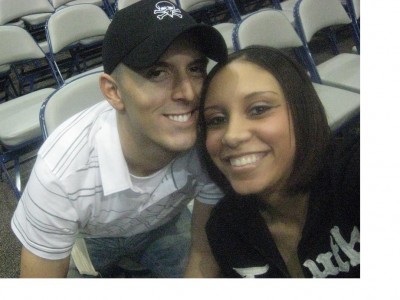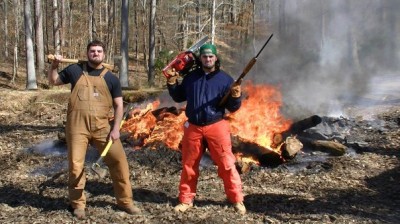But I am a lady, I do not have testiclÈs!
Note: It is PR Friday — post weights gained, lifted, consumed, etc.
A novice can train heavy on a regular basis because they are not lifting a significant percentage of their genetic potential to disrupt homeostasis more than a couple days. Read that sentence again, because there is a lot of shit going on. A novice, defined as someone who adapts to stress on a daily basis (as opposed to a weekly (intermediate) or monthly (advanced) basis), will program things differently than an intermediate. Once intermediate status is achieved, things will get individualized…i.e. more complicated.
An intermediate will have particular recovery limitations that others may not have, and this must be accounted for. As of right now, I do not think there is any good way to efficiently increase strength while getting adequate practice in the Olympic lifts. Increasing the back squat, press, bench press, and deadlift are going to help the Olympic lifts go up, but those “slower lifts” will not increase as fast if the Olympic lifts are practiced adequately during the week (adequate probably means at least twice a week). In comparison, when the focus is to increase those “slower lifts”, you cannot adequately put enough time into getting that “adequate practice” in the snatch and clean & jerk since recovery is a finite thing. This means that you either have to cycle the emphasis on a regular basis or strength train until x weeks out from the meet.
Tommy Suggs used to do the latter, according to an old article written by Bill Starr. He would get strong in training, and then six weeks out from a competition he would get back into doing the lifts and refining his technique. The method seemed to have been useful for him.
Not everyone is an intermediate though, and very few people get there legitimately. Lets say you are a novice, or you train novices. Well, I may have an outline you can try. It has worked for us at the WFAC. It is assumed that the lifts have already been taught.
Monday
Clean and Jerk heavy
Snatch for sets across
Tuesday
Squat
Press
Chin-ups
Wednesday
Off
Thursday
Snatch heavy
Clean and jerk singles across
Friday
Squat
Bench
Deadlift
The lifter will be fresh on Monday to clean and jerk heavy after the two days of rest. A novice will be able to squat the day after doing the Olympic lifting, and deadlifting is done at the end of the week because if it was done any earlier, it may interfere with the other pulling. The sets across for snatch or C&J should/could be timed — on the minute for a snatch (between 10 and 15) and every two minutes for C&J (for 10 reps). Doing it in this manner accomplishes a few things (not in any particular order); A) it uses medium weights so that completed reps build confidence, B) the higher reps are technique practice, and C) it gets the lifter used to lifting on a clock, which will be important in competition. The heavy snatch or C&J days can be five singles across, or just working up to a heavy single (ideally increasing that single week to week). Remember that any increase is still an increase, so it may be 2.5 or 1 kg per week in the later stages — the point is to drive the weight up and PR.
This program can be followed for quite some time — it is what quite a few of the lifters here in the gym did, and got pretty strong. One of my lifters named Bryan, who was mentioned in Rip’s article, The Novice Effect, squatted over 500 for three sets of five and clean and jerked 155 kg in the gym using this program. A novice can recover from this work load because they are a novice. In fact, I used a variation of it at one time while I added 5 kg on my clean and jerk every week all the way up to 165 kg in the gym (I was an intermediate though, and it didn’t last long). The point is that it still includes two strength days while working on the lifts twice a week. More strength will improve your total — remember that.
From Brent:
This is Dmitry Klokov, born in 1983, was the 2005 World Champion and 2008 Silver Medalist in the Beijing Olympics. His best competition total is 423, and in this video he snatches 193 and clean and jerks 230:



